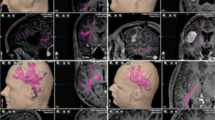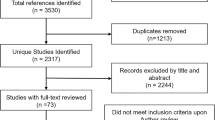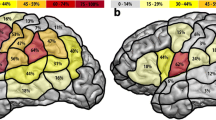Summary
Background. Intra-operative neurophysiological language mapping has become an established procedure in patients operated on for tumours in the area of the language cortex. Awake cranial surgery has specific risks and patients are exposed to an increased physical and mental stress. The aim of the study was to establish an algorithm that enables tailoring the neurosurgical and anaesthetic techniques to the individual patient.
Method. A total of 25 patients underwent awake craniotomy for intra-operative language mapping between 1999 and 2004. Following craniotomy under analgesia and sedation without rigid pin fixation of the head, cortical language mapping was performed in the fully co-operative patient. The results of functional magnetic resonance imaging and of cortical language mapping were incorporated into the 3D dataset for neuronavigation. Depending on the functional data and the individual operative risk tumour resection then proceeded either under conscious sedation with the option of subcortical language monitoring or under general anaesthesia.
Findings. After cortical language mapping patients are assigned to one of four groups: BACC (Berlin awake craniotomy criteria) I–IV. BACC I (9 patients): adequate functional data + operative risk not increased ⇒ tumour resection in the awake patient; BACC II (4 patients): limited functional data + operative risk not increased ⇒ tumour resection in the awake patient with the option of language monitoring as needed; BACC III (9 patients): adequate functional data + increased operative risk ⇒ tumour resection under general anaesthesia using functional navigation; BACC IV (3 patients): limited functional data + increased operative risk ⇒ tumour resection in the awake patient with the option of language monitoring as needed. We observed less adverse events in group BACC III. No permanent deterioration of language function occurred in this series.
Conclusions. The multimodal protocol for awake craniotomy provides for tumour resection under general anaesthesia in selected patients using functional neuronavigation. Our experience with the algorithm suggests that it is a useful tool for preserving function in patients undergoing surgery of the language cortex while reducing the operative risk on an individual basis.
Similar content being viewed by others
References
H Berkenstadt A Perel M Hadani I Unofrievich Z Ram (2001) ArticleTitleMonitored anaesthesia care using remifentanil and propofol for awake craniotomy. J Neurosurg Anesthesiol 13 246–249 Occurrence Handle1:STN:280:DC%2BD3MzmsFagtw%3D%3D Occurrence Handle11426102
RA Danks M Rogers LS Aglio LD Gugino PM Black (1998) ArticleTitlePatient tolerance of craniotomy performed with the patient under local anesthesia and monitored conscious sedation. Neurosurgery 42 28–34 Occurrence Handle1:STN:280:DyaK1c7gsVGqsQ%3D%3D Occurrence Handle9442500
H Duffau L Capelle JP Sichez A Bitar T Faillot F Arthuis R Van Effenterre D Fohanno (1999) ArticleTitlePreoperative direct cortical and sub-cortical electric stimulation during cerebral surgery in functional areas. Rev Neurol (Paris) 155 553–568 Occurrence Handle1:STN:280:DyaK1Mvhs1eisQ%3D%3D
MF Folstein SE Folstein PR McHugh (1975) ArticleTitle“Mini-mental state”. A practical method for grading the cognitive state of patients for the clinician. J Psychiatr Res 12 189–198 Occurrence Handle10.1016/0022-3956(75)90026-6 Occurrence Handle1:STN:280:DyaE28%2FntFKjtw%3D%3D Occurrence Handle1202204
C Fukaya Y Katayama A Yoshino K Kobayashi M Kasai T Yamamoto (2001) ArticleTitleIntraoperative wake-up procedure with propofol and laryngeal mask for optimal excision of brain tumour in eloquent areas. J Clin Neurosci 8 253–255 Occurrence Handle10.1054/jocn.2000.0866 Occurrence Handle1:STN:280:DC%2BD3MzhsVWnuw%3D%3D Occurrence Handle11386801
P Hans V Bonhomme JD Born A Maertens de Noordhoudt JF Brichant PY Dewandre (2000) ArticleTitleTarget-controlled infusion of propofol and remifentanil combined with bispectral index monitoring for awake craniotomy. Anaesthesia 55 255–259 Occurrence Handle10.1046/j.1365-2044.2000.01277.x Occurrence Handle1:STN:280:DC%2BD3c7jslOmsg%3D%3D Occurrence Handle10671844
Huber W, Poeck K, Weniger D, Willmes K (1983) Der Aachener Aphasietest. Hogreve, Göettingen
K Huncke B Van de Wiele I Fried EH Rubinstein (1998) ArticleTitleThe asleep-awake-asleep anesthetic technique for intraoperative language mapping. Neurosurgery 42 1312–1316 Occurrence Handle1:STN:280:DyaK1c3ptl2kuw%3D%3D Occurrence Handle9632190
SE Kohn H Goodglass (1985) ArticleTitlePicture-naming in aphasia. Brain Lang 24 266–283 Occurrence Handle10.1016/0093-934X(85)90135-X Occurrence Handle1:STN:280:DyaL2M7ltV2qtA%3D%3D Occurrence Handle3978406
T Kombos O Suess O Ciklatekerlio M Brock (2001) ArticleTitleMonitoring of intraoperative motor evoked potentials to increase the safety of surgery in and around the motor cortex. J Neurosurg 95 608–614 Occurrence Handle1:STN:280:DC%2BD3MrltVGrtw%3D%3D Occurrence Handle11596955
R Krishnan A Raabe E Hattingen A Szelenyi H Yahya E Hermann M Zimmermann V Seifert (2004) ArticleTitleFunctional magnetic resonance imaging-integrated neuronavigation: correlation between lesion-to-motor cortex distance and outcome. Neurosurgery 55 904–915 Occurrence Handle15458599
S Lehericy H Duffau P Cornu L Capelle B Pidoux A Carpentier S Auliac S Clemenceau JP Sichez A Bitar CA Valery R Van Effenterre T Faillot A Srour D Fohanno J Philippon D Le Bihan C Marsault (2000) ArticleTitleCorrespondence between functional magnetic resonance imaging somatotopy and individual brain anatomy of the central region: comparison with intraoperative stimulation in patients with brain tumors. J Neurosurg 92 589–598 Occurrence Handle1:STN:280:DC%2BD3c3it1artg%3D%3D Occurrence Handle10761647
EC Leuthardt D Fox GA Ojemann RG Dacey RL Grubb KM Rich JG Ojemann (2002) ArticleTitleFrameless stereotaxy without rigid pin fixation during awake craniotomies. Stereotact Funct Neurosurg 79 256–261 Occurrence Handle10.1159/000070839 Occurrence Handle12890984
JT Lurito MJ Lowe C Sartorius VP Mathews (2000) ArticleTitleComparison of fMRI and intraoperative direct cortical stimulation in localization of receptive language areas. J Comput Assist Tomogr 24 99–105 Occurrence Handle10.1097/00004728-200001000-00021 Occurrence Handle1:STN:280:DC%2BD3c7ivFWgsw%3D%3D Occurrence Handle10667669
JD McDonald BW Chong JD Lewine G Jones RB Burr PR McDonald SB Koehler J Tsuruda WW Orrison MP Heilbrun (1999) ArticleTitleIntegration of preoperative and intraoperative functional brain mapping in a frameless stereotactic environment for lesions near eloquent cortex. Technical note. J Neurosurg 90 591–598 Occurrence Handle1:STN:280:DyaK1M7msFalsg%3D%3D Occurrence Handle10067937
FB Meyer LM Bates SJ Goerss JA Friedman WL Windschitl JR Duffy WJ Perkins BP O’Neill (2001) ArticleTitleAwake craniotomy for aggressive resection of primary gliomas located in eloquent brain. Mayo Clin Proc 76 677–687 Occurrence Handle1:STN:280:DC%2BD3MzptVGmsg%3D%3D Occurrence Handle11444399 Occurrence Handle10.4065/76.7.677
G Ojemann C Mateer (1979) ArticleTitleHuman language cortex: localization of memory, syntax, and sequential motor-phoneme identification systems. Science 28 1401–1403
G Ojemann J Ojemann E Lettich M Berger (1989) ArticleTitleCortical language localization in left, dominant hemisphere. An electrical stimulation mapping investigation in 117 patients. J Neurosurg 71 316–326 Occurrence Handle1:STN:280:DyaL1MzmtFKrsw%3D%3D Occurrence Handle2769383
JG Ojemann JW Miller DL Silbergeld (1996) ArticleTitlePreserved function in brain invaded by tumor. Neurosurgery 39 253–258 Occurrence Handle10.1097/00006123-199608000-00003 Occurrence Handle1:STN:280:DyaK28vivFGlsg%3D%3D Occurrence Handle8832661
Penfield W, Roberts L (1951) Speech and brain mechanism. Princeton, University Press
T Reithmeier M Krammer H Gumprecht W Gerstner CB Lumenta (2003) ArticleTitleNeuronavigation combined with electrophysiological monitoring for surgery of lesions in eloquent brain areas in 42 cases: a retrospective comparison of the neurological outcome and the quality of resection with a control group with similar lesions. Minim Invasive Neurosurg 46 65–71 Occurrence Handle10.1055/s-2003-39334 Occurrence Handle1:STN:280:DC%2BD3s3jvFCitQ%3D%3D Occurrence Handle12761674
HJ Reulen UD Schmid J Ilmberger W Eisner K Bise (1997) ArticleTitleTumor surgery of the speech cortex in local anesthesia. Neuropsychological and neurophysiological monitoring during operations in the dominant hemisphere. Nervenarzt 68 813–824 Occurrence Handle10.1007/s001150050199 Occurrence Handle1:STN:280:DyaK1c%2FjslWjsQ%3D%3D Occurrence Handle9441254
FE Roux K Boulanouar JA Lotterie M Mejdoubi JP LeSage I Berry (2003) ArticleTitleLanguage functional magnetic resonance imaging in preoperative assessment of language areas: correlation with direct cortical stimulation. Neurosurgery 52 1335–1345 Occurrence Handle12762879
A Sarang J Dinsmore (2003) ArticleTitleAnaesthesia for awake craniotomy–evolution of a technique that facilitates awake neurological testing. Br J Anaesth 90 161–165 Occurrence Handle10.1093/bja/aeg037 Occurrence Handle1:STN:280:DC%2BD3s%2FjtVOjuw%3D%3D Occurrence Handle12538371
AM Schulte-Tamburen J Scheier J Briegel D Schwender K Peter (1999) ArticleTitleComparison of five sedation scoring systems by means of auditory evoked potentials. Intensive Care Med 25 377–382 Occurrence Handle10.1007/s001340050861 Occurrence Handle1:STN:280:DyaK1M3ntF2guw%3D%3D Occurrence Handle10342511
R Steinmeier SB Sobottka G Reiss J Bredow J Gerber G Schackert (2002) ArticleTitleSurgery of low-grade gliomas near speech-eloquent regions: brainmapping versus preoperative functional imaging. Onkologie 25 552–557 Occurrence Handle10.1159/000068627 Occurrence Handle1:STN:280:DC%2BD3s%2Fls1KksA%3D%3D Occurrence Handle12566901
Suess O, Picht T, Kuehn B, Mularski S, Brock M, Kombos T (2005) Image- and function-guided neurosurgery in awake craniotomy without rigid pin fixation of the head (submitted for publication in Neurosurgery)
MD Taylor M Bernstein (1999) ArticleTitleAwake craniotomy with brain mapping as the routine surgical approach to treating patients with supratentorial intraaxial tumors: a prospective trial of 200 cases. J Neurosurg 90 35–41 Occurrence Handle1:STN:280:DyaK1MzjvFCqug%3D%3D Occurrence Handle10413153
EJ Vlieger CB Majoie S Leenstra GJ Den Heeten (2004) ArticleTitleFunctional magnetic resonance imaging for neurosurgical planning in neurooncology. Eur Radiol 14 1143–1153 Occurrence Handle10.1007/s00330-004-2328-y Occurrence Handle15148622
IR Whittle S Midgley H Georges AM Pringle R Taylor (2005) ArticleTitlePatient perceptions of “awake” brain tumour surgery. Acta Neurochir (Wien) 13 275–277
Author information
Authors and Affiliations
Rights and permissions
About this article
Cite this article
Picht, T., Kombos, T., Gramm, H. et al. Multimodal protocol for awake craniotomy in language cortex tumour surgery. Acta Neurochir (Wien) 148, 127–138 (2006). https://doi.org/10.1007/s00701-005-0706-0
Received:
Accepted:
Published:
Issue Date:
DOI: https://doi.org/10.1007/s00701-005-0706-0




